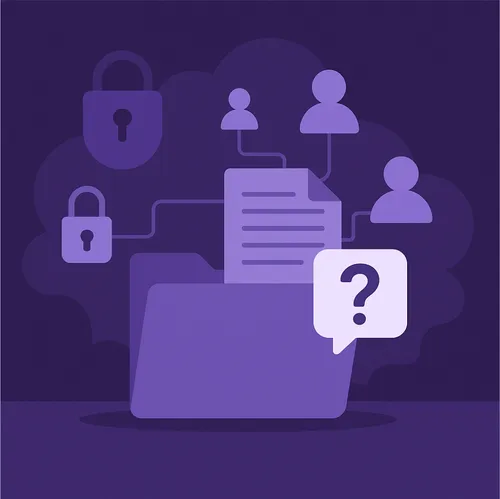
Knowledge base
April 13, 2025
???? Files shared … and forgotten? Who still has access?
???? In many Microsoft 365 environments, external access is fully open by default. That seems convenient: you can quickly share files with customers, partners or freelancers. But … what happens after that? Who still has access to those documents?
The risks are greater than you think:
-
???? Files remain accessible to former partners or former employees
-
???? E-mail addresses are reused (John Smith becomes John Stallone … and gains access)
-
???? There is often no visibility or control over what happens externally
And without control means: high risk of data breaches.
And a data breach? That not only costs money, but also trust.
Recognizable? You are not the only one
We asked companies in our community: How do you handle remote access?
The answers:
-
65%: Only approved domains should be allowed access (top!).
-
22%: Manual check (risky, you easily miss something)
-
9%: No policy yet … (dangerous)
-
4%: No idea, help! (all alarm bells on)
In short: far from everyone has really got it right. And that while the consequences can be major, especially with legislation such as NIS2 imposing increasingly stringent requirements for data security.
What can you do to reduce risk?
At ALTA-ICT B.V. we help organizations to make external access safe and simple. Without fuss.
How?
✅ Grant access only to approved domains
✅ Regularly check who still has access
✅ Work through clear permissions in SharePoint and Microsoft 365
✅ Automatically alert users to high-risk sharing
So you always have a grip on your data – and you can be sure that you are working together securely.
Is your data really safe?
???? Are you thinking, “Actually, I’m not sure…”?
???? Or, “We set something once, but never check it…”?
Then it’s time for action.
✅ Schedule a short demo where we’ll show you how to manage remote access smartly.
✅ Or send a message for a no-obligation spa session.
References
Want to know more?
